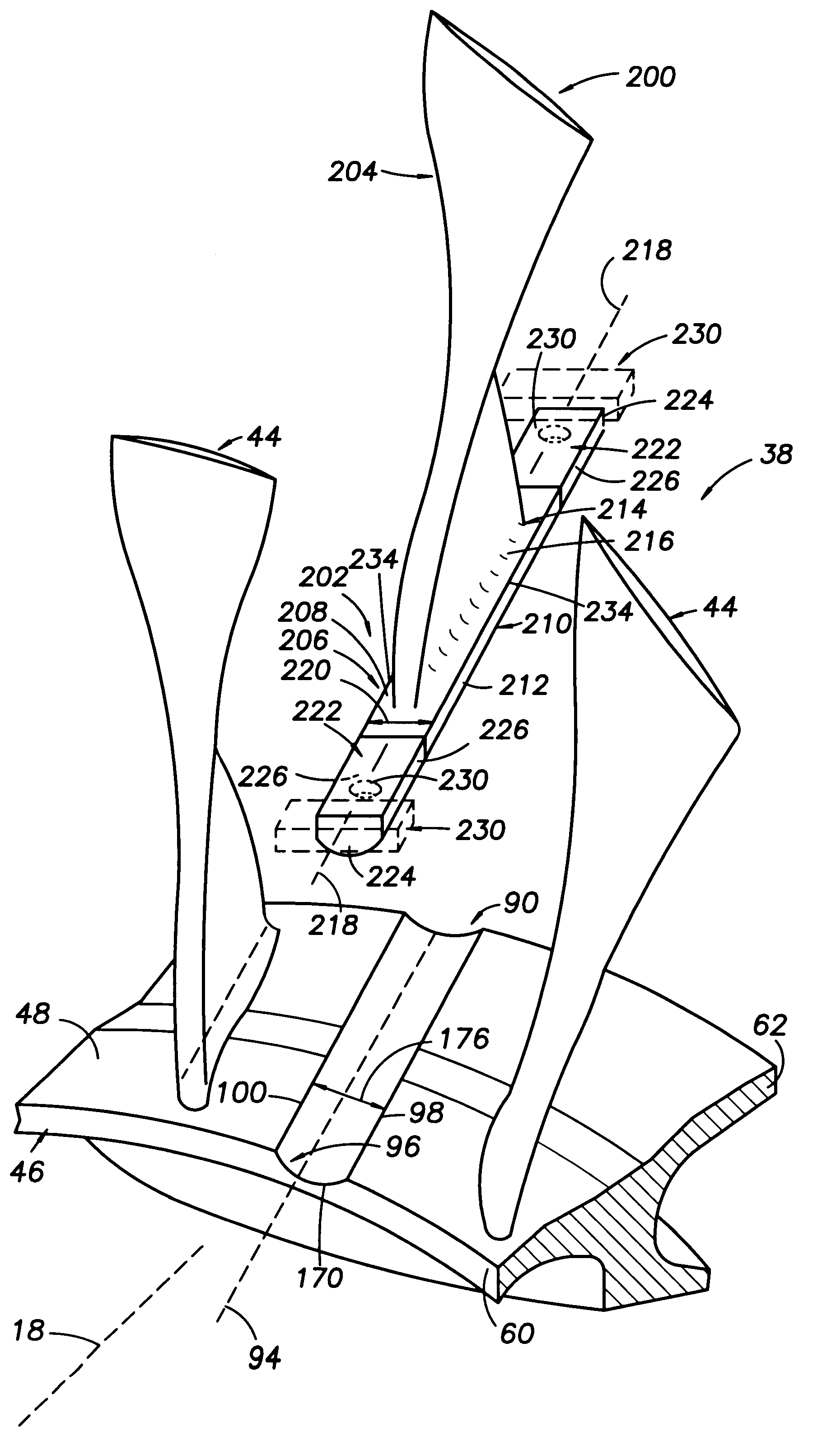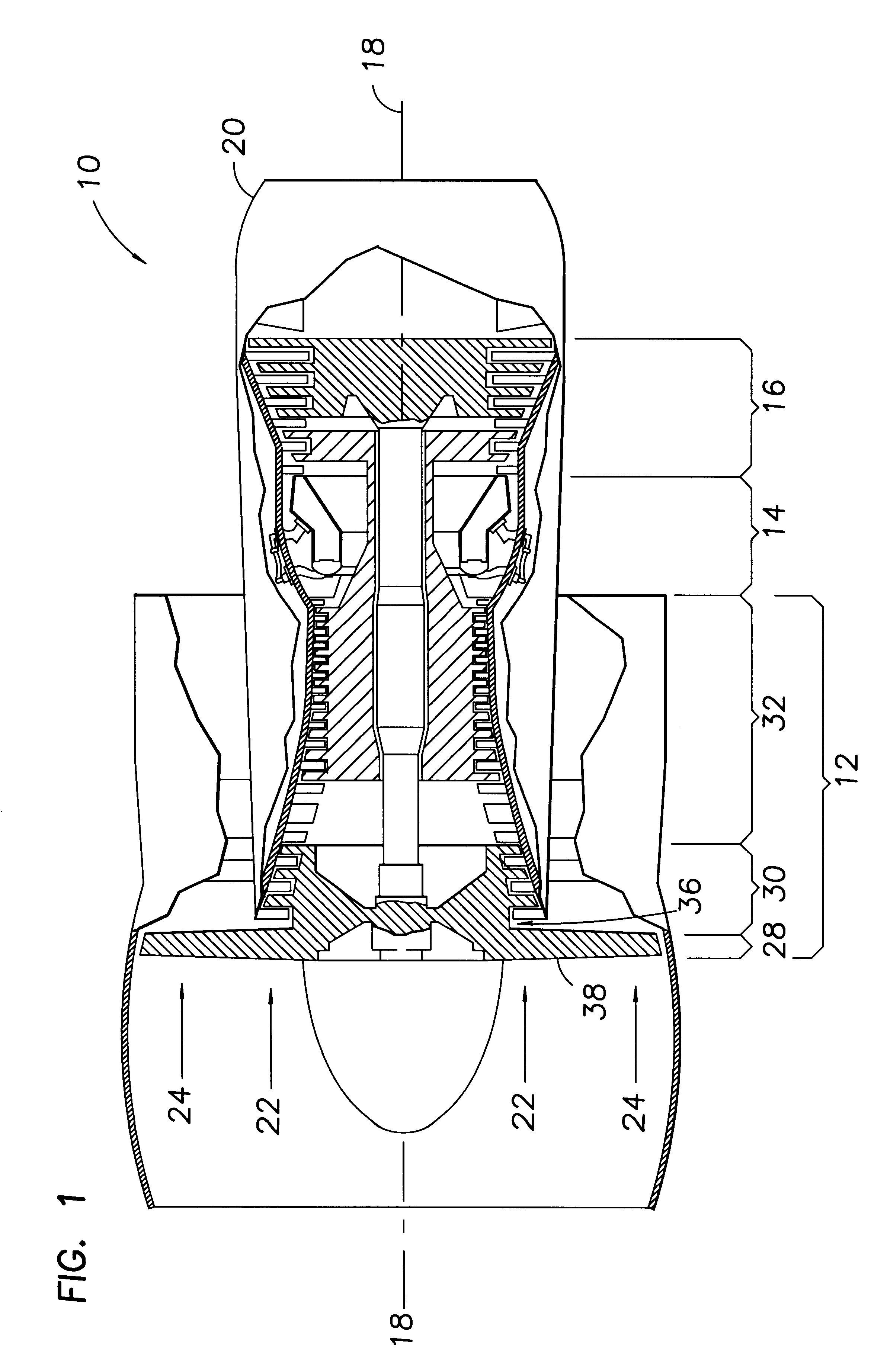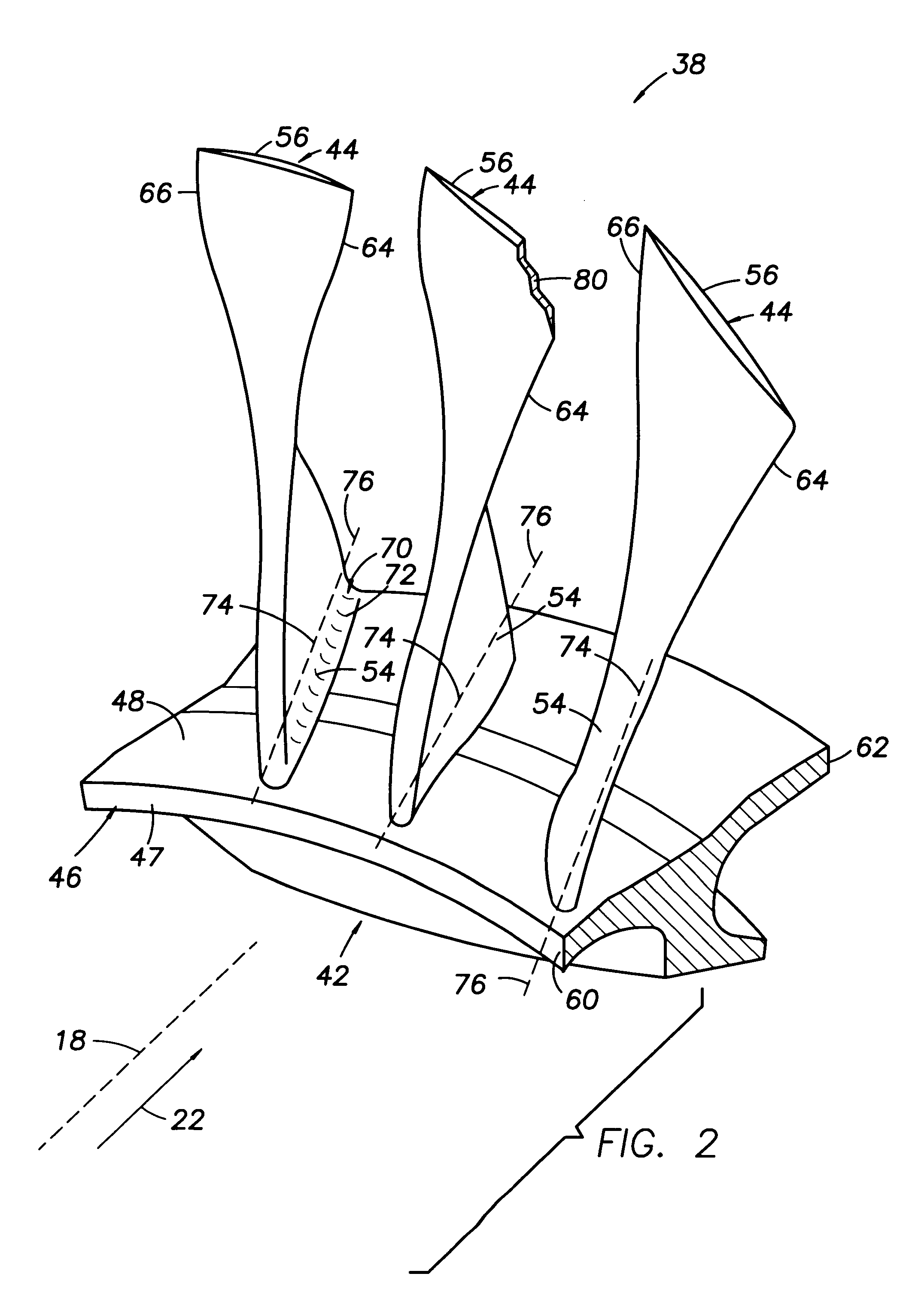Method for linear friction welding and product made by such method
a friction welding and linear technology, applied in the field of friction welding, can solve the problems of significant concern over the strength of the stub, the relatively heavy assembly, and the difficulty and cost of stub fabrication
- Summary
- Abstract
- Description
- Claims
- Application Information
AI Technical Summary
Benefits of technology
Problems solved by technology
Method used
Image
Examples
Embodiment Construction
.
The present invention is disclosed with respect to a best mode embodiment for use in a gas turbine engine of the type illustrated in FIG. 1. Referring now to FIG. 1, a conventional gas turbine engine 10 includes compressor 12, combustor 14, and turbine 16 sections disposed along a longitudinal axis 18 and enclosed in an engine case 20. A primary flow path 22 for working fluid, e.g., air, extends longitudinally along the axis 18. A secondary flow path 24 for working fluid extends parallel to and radially outward of the primary flow path 22.
The compressor 12 may include a fan 28, a low pressure compressor 30, and a high pressure compressor 32. The fan 28 includes a rotor assembly 36 having one or more integrally bladed rotor stages 38.
Referring now to FIG. 2, an integrally bladed fan rotor stage 38 comprises a disk 42 and blades 44. The disk 42 has an outer rim 46 having a radially inner surface 47, and a radially outer surface 48. Each of the blades 44 includes an airfoil having a b...
PUM
| Property | Measurement | Unit |
|---|---|---|
| angles | aaaaa | aaaaa |
| angle | aaaaa | aaaaa |
| angle | aaaaa | aaaaa |
Abstract
Description
Claims
Application Information
 Login to View More
Login to View More - R&D
- Intellectual Property
- Life Sciences
- Materials
- Tech Scout
- Unparalleled Data Quality
- Higher Quality Content
- 60% Fewer Hallucinations
Browse by: Latest US Patents, China's latest patents, Technical Efficacy Thesaurus, Application Domain, Technology Topic, Popular Technical Reports.
© 2025 PatSnap. All rights reserved.Legal|Privacy policy|Modern Slavery Act Transparency Statement|Sitemap|About US| Contact US: help@patsnap.com



